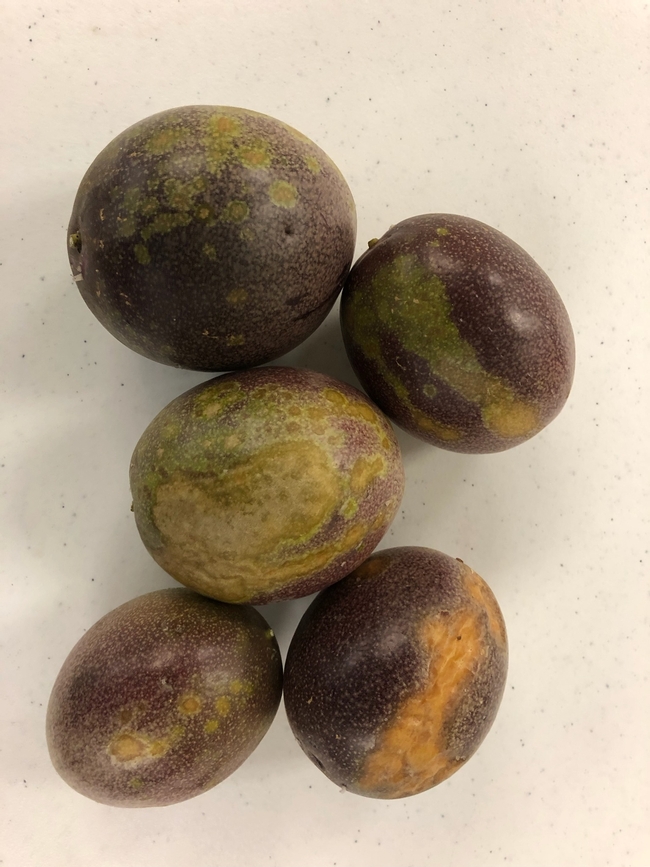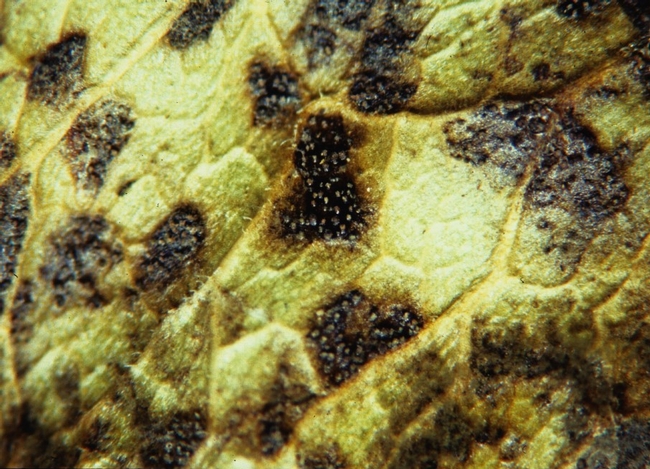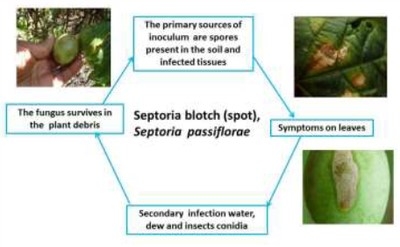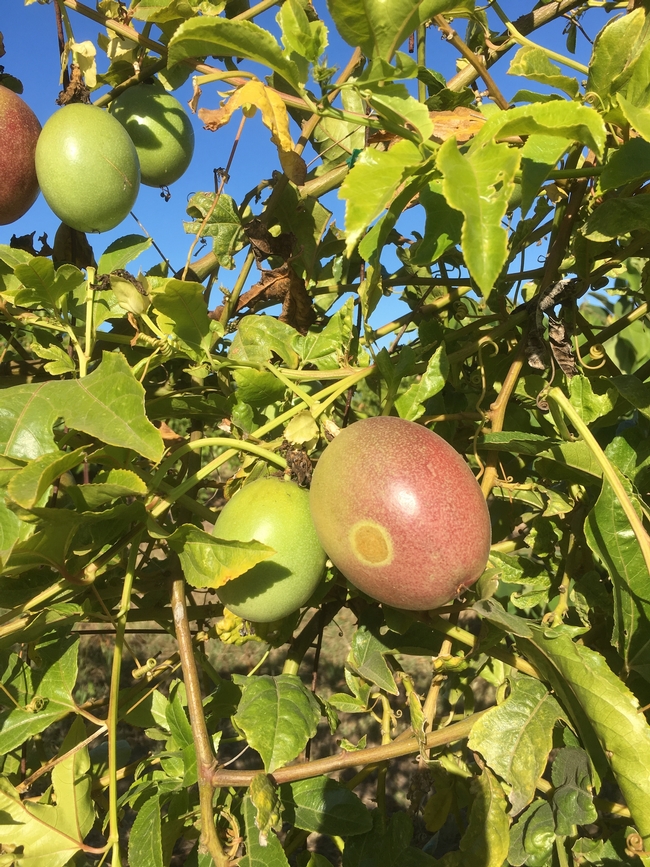
Posts Tagged: passionfruit
Find the Passsion
To Passionfruit Growers, packers, shippers:
Several state researchers with passionfruit are collaborating with Dr. Eric Stafne, Professor, Fruit Crops from Mississippi State University on a project to prioritize research and extension programs for the U.S. passionfruit industry. As a part of that effort we need your help in completing a brief survey (SEE LINK BELOW). If you have questions about the survey please call (Eric Stafne (tel: 601-403-8939) or Jeff Wasielewski (tel: 305-248-3311 x.227 or 305-282-7526). Please fill-in or return the survey by May 31, 2022 (sooner is better). Thanks. The survey is being done in preparation for a Passionfruit Meeting at the University of Florida
Survey link: https://msudafvm.co1.qualtrics.com/jfe/form/SV_5oFY0ThcIoepwXQ
This survey will help all the researcher-extension faculty involved in this nationwide effort plan and apply for grants that could subsequently assist you with pest issues (insects, diseases), disorders, postharvest issues, and cultural practices.
To register for the meeting (to be held at U of F's Tropical Reserach and Extension Center, Homestead, FL) please follow the link below. It will be held both in person and by zoom. more information us forthcoming on the agenda
Registration: https://www.eventbrite.com/e/growing-the-us-passion-fruit-industry-strategic-conference-registration-301652409477
Passionfruit interplanted with cherimoya

passionfruit interplanted with chermioya
There's More to Passionfruit than Meets the Eye
Passionfruit and Dragonfruit Growers Pest Control Workshop
From: Jonathan H. Crane, Tropical Fruit Crop Specialist and Jeff Wasielewski, Commercial Tropical Fruit Agent
April 19, 2022, Time – 10AM-12PM - 1.5 CEU's applied for
Passionfruit and Dragonfruit Growers Pest Control Workshop
Insect and disease problems and control, economic issues, and cultural practices
Registration required ($25)
Eventbrite link https://www.eventbrite.com/e/passionfruit-and-dragonfruit-growers-workshop-registration-315757437997
Attendance options – a HYBRID meeting
You can attend in-person (registration list through Eventbrite or in-person on day of event) Might be nice weather
Miami-Dade County Extension Service
18710 SW 280 St., Homestead, FL 33033
Tel: 305-248-3311
or you can attend on-line through Zoom
Online participants – Zoom
Once registered you will receive a link to the Zoom meeting through Eventbrite
|
Agenda |
|
|
Jeff Wasielewski, Commercial Tropical Fruit Agent (20 min) |
Introduction, logistics and an introduction to passion fruit and dragon fruit |
|
Daniel Carrillo, Entomologist – Tropical Fruits (30 min) |
Passion fruit and dragon fruit pests, beneficial insects, and pollinators |
|
Romina Gazis, Plant Pathologist – Ornamentals/Tropical Fruits (40 min) |
Major Diseases Affecting Commercial Dragon Fruit and Passionfruit Production in South Florida |
|
Trent Blare, Agricultural Economist (10 min) |
Tools to determine the profitability of passion fruit and dragon fruit; cost of pest control |
|
Jonathan Crane, Tropical Fruit Crop Specialist (20 min) |
Cultural practices to mitigate pest problems and what conventional and organic pesticides are registered for these crops |
|
Questions and Answers |
|

passionfruit

dragon fruit pile
Follow Your Passion
To Passionfruit Growers, packers, shippers:
Several researchers in states with passionfruit are collaborating with Dr. Eric Stafne, Professor, Fruit Crops from Mississippi State University on a project to prioritize research and extension programs for the U.S. passionfruit industry. As a part of that effort, we need your help in completing a brief survey (SEE LINK BELOW). If you have questions about the survey please call (Eric Stafne (tel: 601-403-8939) or Jeff Wasielewski (tel: 305-248-3311 x.227 or 305-282-7526). Please fill-in or return the survey by May 31, 2022 (sooner is better). Thanks. The survey is being done in preparation for a Passionfruit Meeting at the University of Florida
Survey link: https://msudafvm.co1.qualtrics.com/jfe/form/SV_5oFY0ThcIoepwXQ
This survey will help all the researcher-extension faculty involved in this nationwide effort plan and apply for grants that could subsequently assist you with pest issues (insects, diseases), disorders, postharvest issues, and cultural practices.
To register for the meeting (to be held at U of F's Tropical Research and Extension Center, Homestead, FL) please follow the link below. It will be held both in person and by zoom. More information will be forthcoming on the agenda
Registration: https://www.eventbrite.com/e/growing-the-us-passion-fruit-industry-strategic-conference-registration-301652409477
Passionfruit interplanted with cherimoya

passionfruit interplanted with chermioya
NOT a New Disease of Passionfruit
Passion fruit is widely grown and valued throughout the tropics and subtropics. Most Passifloras are vines which can climb to 20 or 30 feet. The fruit varies in color from purple to yellow-orange and in shape from an egg to a tennis ball. Inside its quarter-inch protective rind are numerous small seeds covered by a juicy aromatic, sweet-acidic pulp. The sweeter species are esteemed as a fresh fruit. The seeds are consumed with the pulp. The fruit is more commonly made into juice and often blended with other juices such as orange. The fruit also is used to make excellent ice creams, sherbets, jellies, and pies. The downside of the passion fruit is that most esteemed species are very frost tender. The best adapted to California of the subtropical species, the purple granadilla (P. edulis), is prone to a fusarium soil disease. However, there is a yellow form which, though not as sweet, is not subject to this disease. More importantly, the yellow form can be hybridized with the purple or used as a rootstock. The crop grows mainly along the coast where it enjoys the mild weather.
The purple ‘Frederick' variety is probably the most widely grown commercial variety in California. It's great tasting, and I've been known to suck the delicious innards of 15 fruit at a sitting. Aside from fusarium wilt, it has few pests or diseases. That was until this fall when fruit spotting started showing up on fruit and leaves. The cause is a fungus – Septoria spp. – which thrives in cool, moist conditions. These were exactly what we had this year. All summer long, there was fog along the coast, and this is what the fungus enjoys. It colonizes leaves, defoliating the plant and spreading to the fruit, causing Septoria Blotch (Spot). Once infected there's not much that can be done, other than preventing further spread to the rest of the vineyard.
Photo: Fruit Blotch
Fungal structures (pycnidia) growing on leaf, causing scarring spots
Disease symptoms:
- Leaves are the most affected organs, showing light brown slightly round necrotic spots normally encircled by a chlorotic halo. A single lesion per leaf is sufficient to cause abscission, and even leaves without visible symptoms may fall prematurely.
- When the disease reaches 15-20% of leaves in the same plant, partial or even complete leaf abscission is observed. In young twigs, lesions may promote girdling leading to wilt and twig tips death.
- Lesions on flowers are similar to those on leaves. The primary infection in the calyx may reach the stalk, causing the early drop of flowers. The infection may occur at any stage of the development of the fruits, affecting maturation or development.
- Leaf and fruit abscission, twig wilt and plant death may occur under disease favoring conditions.
Treatment: Under ideal conditions and forehand knowledge!!!!
1) Rake up infected leaves on the ground and bury or compost more than 50 ft away from the vines.
2) Pick off spotted fruit and leaves and remove from field as soon as possible as spores are being produced in the lesions and can infect surrounding leaves and fruit when moisture is present.
3) During periods with dew, rain or ocean mist, spray Abound (azoxystrobin) or generic version of this fungicide on the vines. It distributes well over the foliage and fruit, is fairly rainfast, and gives about 2 weeks' protection.
4) To minimize the risk of the fungus developing resistance to Abound, apply a copper fungicide between Abound sprays, for instance Cueva (copper octanoate) is a good product and approved for organic production. Copper is a protectant and needs good coverage to be effective. It provides about 7 days of protection, possibly longer without rain.
So this year has been weird. Most years are. Lots of rain, no freezes, but it was a cold winter. Then all this fog in the summer that normally clears up going into summer. it seems like there's always something new. Had that funny scale on citrus again this year - wax scale - And the effects of fire can always bring a round of new pests. And there is always a new winter waiting for us.
Photo: Leaf and fruit spotting (blotch) from Septoria.




